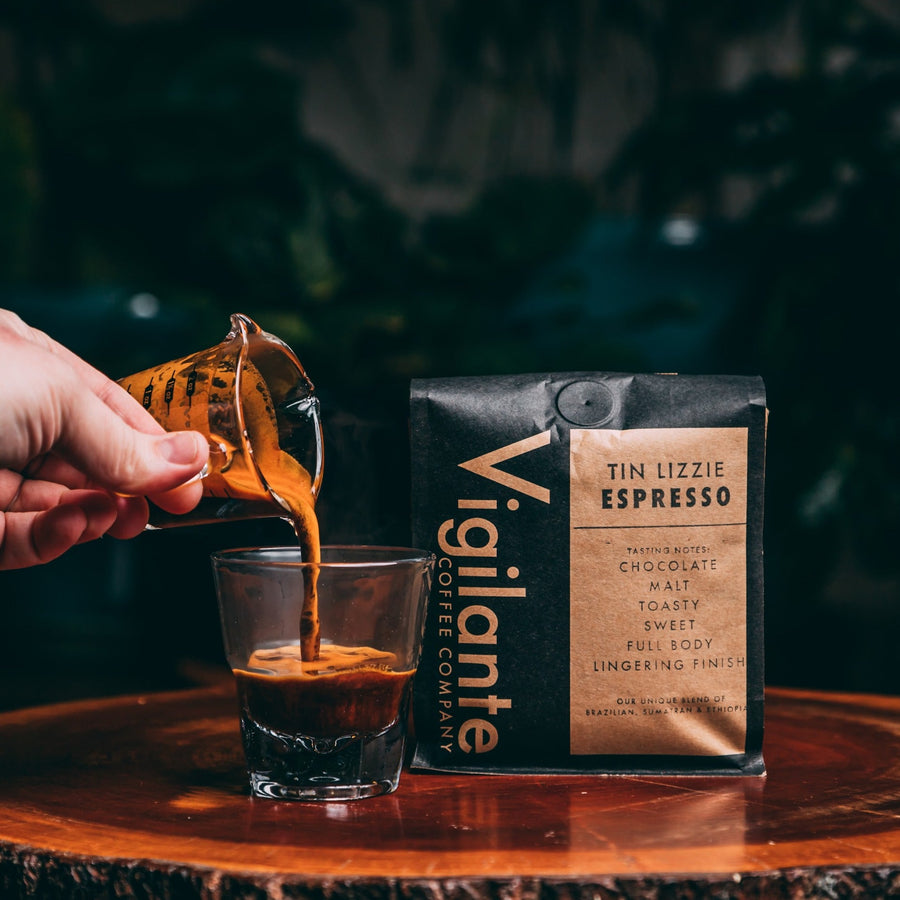Where to Buy Authentic SOE Single Origin Espresso Online
Where to Buy Authentic SOE Single Origin Espresso Online
Blog Article
Understanding Coffee Beans: the Journey From Espresso to Blended Coffee Beans

The Origins of Coffee: A Global Point Of View
While you might consider coffee as a contemporary staple, its beginnings trace back centuries, linking with cultures around the world. The tale begins in Ethiopia, where tale says a goat herdsman named Kaldi found the energizing impacts of coffee beans after noticing his goats frolicking energetically after eating them. This sparked rate of interest, resulting in coffee's infect Arab traders that cherished the made beverage. By the 15th century, it got to Persia, Egypt, and Turkey, where coffeehouses ended up being social hubs for conversation and society.
As profession courses expanded, coffee made its way to Europe in the 17th century, rapidly obtaining appeal. It transformed from a mystical beverage into a day-to-day routine, intellectual exchanges and motivating celebrations. Each society included its unique twist to coffee preparation, enhancing its background. This international trip highlights just how coffee attaches us, transcending boundaries and joining varied traditions through an easy bean.
Growing and Harvesting of Coffee Beans
As coffee's journey progressed, the emphasis moved to the growing and harvesting of particular bean varieties, particularly those used for espresso. You'll locate that coffee beans often originate from Arabica or Robusta plants, each offering distinctive tastes. The suitable expanding conditions include high altitudes and abundant, well-drained dirt, which improve the beans' high quality.
Throughout the harvest, choosing approaches differ. Timing is crucial; you want to collect when the cherries get to peak ripeness for optimum flavor.
As soon as collected, the beans are gotten ready for processing, which is important in determining their last taste. Recognizing the growing and harvesting procedures gives you understanding into what enters into your preferred coffee, enhancing your appreciation for each and every cup.
Handling Methods: From Cherry to Bean
Since you've learnt more about collecting espresso beans, allow's explore just how those cherries transform right into the coffee beans you love. You'll see exactly how various harvesting methods influence flavor, adhered to by the necessary steps of fermentation and drying. We'll break down the milling and grading procedure that determines your coffee's high quality.
Harvesting Strategies Discussed
When it comes to coffee, comprehending harvesting techniques is vital, considering that they straight affect the flavor and high quality of the beans you take pleasure in. Discerning choosing includes hand-picking only ripe cherries, ensuring you get the best quality beans. Ultimately, the choice of collecting strategy can substantially affect your coffee experience, so it's worth understanding exactly how those beans made it to your cup.
Fermentation and Drying Out
After collecting, the following steps in processing coffee beans play a substantial duty in forming their flavor. You'll find that fermentation is vital, as it aids damage down the mucilage surrounding the beans, enhancing their taste account. Depending on the method, this procedure can last from a couple of hours to several days, with varying outcomes based upon temperature and humidity.
Sun-drying allows the beans to absorb flavors from the setting, while mechanical drying warranties constant dampness levels regardless of climate. Proper drying out is vital to prevent mold and mildew and preserve the beans' high quality, inevitably influencing your mug of coffee.
Milling and Grading Process
As fermentation and drying established the stage for flavor advancement, the milling and grading procedure assurances that only the finest coffee beans make it to your cup. This phase entails eliminating the outer layers of the coffee cherry, including the parchment and husk. High-quality beans obtain a greater quality, resulting in a richer coffee experience.
Toasting Techniques: Unlocking Flavor Prospective
When you roast coffee beans, the technique you select can dramatically impact the flavor profile. Understanding the relationship between time, temperature level, and toasting strategies is vital to disclosing the possibility of your mixture. Let's discover just how these components come with each other to produce the ideal cup.
Roasting Methods Explained
While you could assume that all coffee toasting techniques yield the same outcomes, the reality is that each technique reveals unique taste possibilities in the beans. You can select between approaches like drum toasting, air roasting, or perhaps conventional pan roasting. Drum roasting uses a rotating drum to equally disperse warm, enhancing caramelization and producing a balanced flavor. Air Full Article roasting, on the various other hand, flows hot air around the beans, promoting a lighter roast with obvious level of acidity. Frying pan roasting enables hands-on control but requires consistent interest to avoid burning. Each approach has its nuances, so try out different techniques can help you find the excellent roast that straightens with your preference preferences. Delight in the journey of discovering your suitable mug!

Effect On Taste Profile
Different toasting techniques not just influence the procedure however additionally significantly influence the taste account of the coffee beans. Dark roasts, on the other hand, bring out vibrant, smoky tastes, sometimes covering up useful reference the bean's special characteristics. Comprehending these subtleties helps you appreciate the artistry behind your mug of coffee, improving your total experience with every sip.
Time and Temperature Elements
To release the full taste potential of coffee beans, both time and temperature throughout the toasting process play considerable functions. When roasting, you'll discover that higher temperatures can rapidly establish tastes, however if you rush it, you might wind up with charred notes. On the other hand, lower temperature levels permit a much more gradual taste advancement, showcasing the beans' distinct characteristics.

Timing is simply as essential; expanding the roast also long can cause a loss of acidity and illumination, while too brief a roast may leave the beans underdeveloped. Finding that sweet place calls for method and testing. By changing these elements, you can reveal the abundant, complex flavors concealed within each bean, producing a really amazing coffee experience.
The Art of Blending: Crafting Unique Coffee Accounts

Beginning by picking a base coffee that gives a strong foundation. A bright Ethiopian bean can bring fruitiness, while a rich Brazilian coffee adds body.
As you blend, remember that each mix informs a tale. You're not simply making coffee; you're creating an experience. So, take your time, taste often, and appreciate the journey of discovering your trademark mix.
Brewing Techniques: How Prep Work Impacts Flavor
Blending coffee opens up a domain name of flavor possibilities, yet exactly how you make that mix can significantly affect your last mug. On the other hand, a pour-over highlights the coffee's clearness and illumination, excellent for showcasing delicate notes.
Espresso, with its high stress, generates a concentrated shot that highlights sweetness and crema. If you like a lighter brew, take into consideration a chilly brew technique; it yields a smooth, less acidic taste.
Adjusting variables like water temperature, grind size, and make time can change your coffee's profile. Embrace the art of brewing to find the tastes concealed in your coffee blends.
The Future of Coffee: Sustainability and Innovation
As the coffee his response industry progresses, sustainability and innovation are becoming necessary for attending to environmental difficulties and conference consumer demands. You'll notice that more coffee business are adopting environmentally friendly practices, from sourcing beans ethically to implementing lasting farming strategies. These changes not just aid the earth yet also enhance the top quality of the coffee you appreciate.
You could see technologies like eco-friendly product packaging and water-saving developing techniques that reduce waste. Advanced technology, such as blockchain, is likewise becoming prominent, guaranteeing openness in the supply chain, which allows you to trace your coffee back to its origins.
Additionally, purchasing local areas and supporting farmers with reasonable profession initiatives promotes an extra sustainable coffee ecosystem. As you sip your next mug, keep in mind that your choices can add to a brighter future for coffee. By selecting lasting brands, you're not just appreciating a drink; you're making a positive influence on the globe.
Regularly Asked Questions
What Is the Difference Between Arabica and Robusta Beans?
Arabica beans are smoother, sweeter, and have a higher acidity, while robusta beans are stronger, a lot more bitter, and consist of even more high levels of caffeine. You'll discover these distinctions in flavor and aroma when brewing your coffee.
Exactly How Does Elevation Affect Coffee Bean Taste?
Elevation influences coffee bean taste significantly. Higher elevations create beans with brighter acidity and facility flavors, while lower altitudes usually generate beans that are larger and much less nuanced. You'll notice these distinctions in your cup!
What Are the Health Perks of Alcohol Consumption Coffee?
Consuming alcohol coffee can increase your energy, improve mental emphasis, and also improve physical performance. It's rich in antioxidants, may lower the risk of particular diseases, and can advertise a healthier metabolic rate when consumed in small amounts.
Can Coffee Beans Be Recycled for Brewing?
Yes, you can recycle coffee beans for developing, yet the taste may be weak. If you enjoy exploring, try reusing them in different methods, like chilly brews or adding to healthy smoothies for an added kick.
How Should I Shop Coffee Beans for Freshness?
To keep your coffee beans fresh, save them in an impermeable container in an amazing, dark area. Prevent revealing them to wetness, light, or heat, as these factors can rapidly deteriorate their taste and aroma.
Comprehending Coffee Beans: the Journey From Espresso to Blended Coffee Beans.
Currently that you have actually learned regarding gathering coffee beans, let's discover how those cherries change right into the coffee beans you love.When you roast coffee beans, the method you select can drastically influence the taste account - Single Origin Espresso.While you could assume that all coffee toasting methods generate the very same results, the reality is that each strategy reveals distinct flavor capacities in the beans.Different roasting methods not just affect the procedure yet additionally significantly influence the taste profile of the coffee beans
Report this page